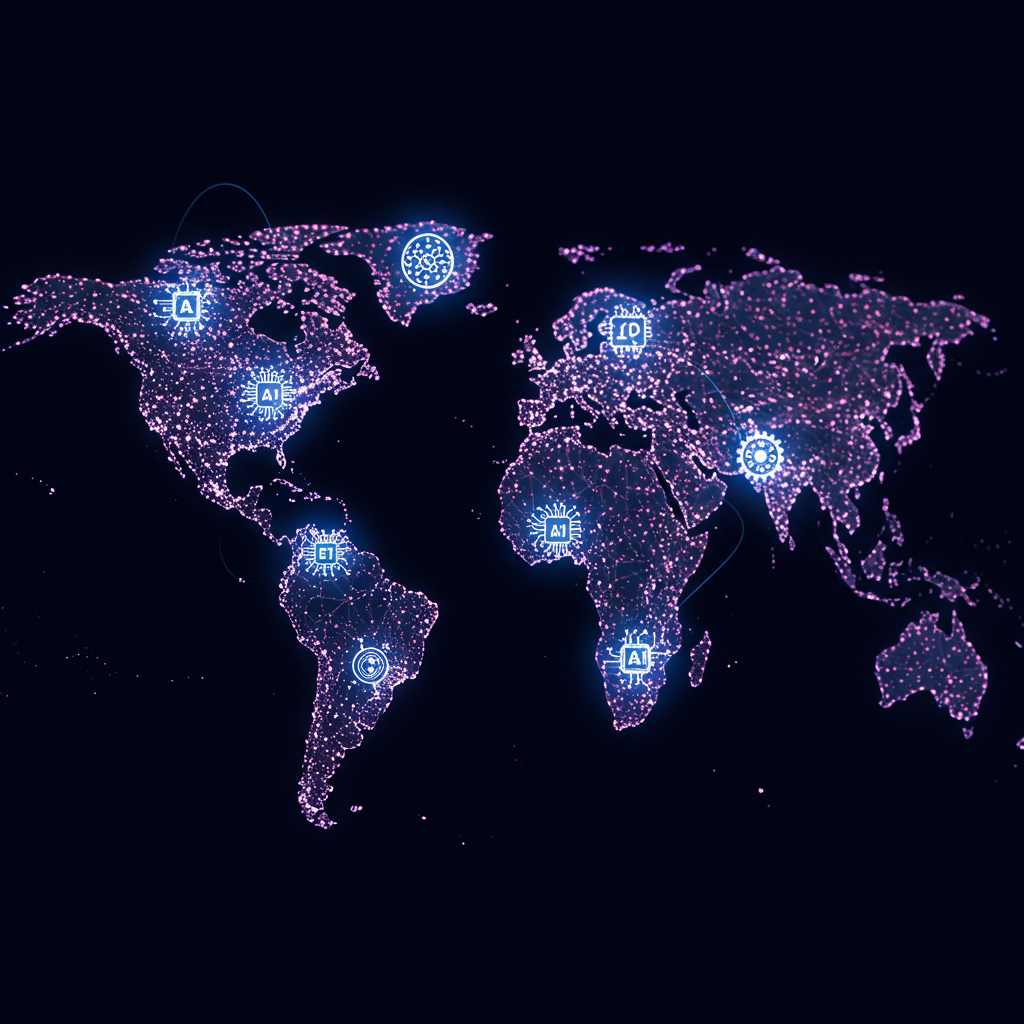Economic Analysis of AI Industry Market Share Trends
Explore the AI industry’s economic landscape: market share, key trends, investments, and growth forecasts. Data-driven insights for business professionals.

Introduction
The economic landscape of the AI industry is evolving at an unprecedented pace, with market share, investment flows, and technological advancements driving transformative change. In this comprehensive analysis, we delve into the latest data on the AI industry market share, explore key trends, examine investment patterns, and forecast growth through 2030. Business leaders and professionals will gain actionable insights into the leading companies and emerging opportunities that define the AI sector’s economic impact.
Current AI Industry Market Share and Size
In 2024, the global AI industry market share has reached remarkable heights, with estimates placing the market valuation between $200 billion and $250 billion (Statista, Grand View Research). This variation arises from differing methodologies and the inclusion of adjacent technology segments. North America, particularly the United States, continues to dominate, accounting for over 40% of the global AI market share. Europe and Asia-Pacific follow, with China rapidly increasing its market presence through government-backed initiatives and private sector innovation.
Within the AI industry, deep learning and generative AI are the fastest-growing segments. Deep learning applications, from computer vision to natural language processing, have captured a significant portion of enterprise investment. Meanwhile, generative AI, exemplified by large language models and creative content generation, is projected to account for over 20% of total AI revenues in 2024. Major technology companies, including Google, Microsoft, and OpenAI, are at the forefront, leveraging their platforms to expand market influence.

Furthermore, the AI industry’s valuation is bolstered by the integration of AI across cloud computing, hardware, and software platforms. Consequently, companies like NVIDIA and AMD, which supply critical hardware, play a pivotal role in shaping market dynamics. For a deeper dive into regional trends and future projections, explore AI Market Share & Growth Forecast 2025-2030.
Key AI Market Trends Driving Growth
The AI market in 2024 is characterised by several powerful trends. Firstly, productivity improvements driven by AI adoption are reshaping business operations across sectors. Generative AI, in particular, is enabling new forms of automation, creative content production, and real-time decision-making. As a result, industries such as healthcare, automotive, finance, and retail are experiencing accelerated digital transformation.
Secondly, tech giants like Google, Microsoft, and Amazon are investing heavily in AI research and infrastructure, thereby accelerating the pace of innovation. However, organisations continue to face challenges in scaling AI investments, including data privacy concerns, talent shortages, and integration complexities. Recent data from McKinsey & Company indicates that over 60% of enterprises have increased AI spending in the past year, yet only a fraction have achieved full-scale deployment.
Moreover, the expansion of AI into new verticals is creating opportunities for specialised solution providers. The rise of open-source AI projects and collaborative ecosystems is further democratising access to advanced AI capabilities. For insights on how AI agents are transforming business, see The AI Agents Revolution Transforming Business by 2035.
Investment Flows and Venture Capital in AI
Investment flows into the AI industry have reached record-breaking levels in 2024. Venture capital funding for AI startups surpassed $70 billion globally, with the United States capturing nearly 65% of total investments (CB Insights, PitchBook). This surge is fuelled by a combination of technological breakthroughs, market demand, and the promise of exponential returns.

Geographically, Silicon Valley remains the epicentre of AI investment, but there is growing momentum in Europe, China, and India. Sector-specific investments are particularly strong in healthcare AI, autonomous vehicles, and enterprise automation. Notably, open-source AI projects are attracting significant funding, reflecting a shift towards collaborative innovation. Consequently, these investment trends are closely linked to rising AI adoption rates and the rapid commercialisation of new technologies.
AI Sector Growth Forecast from 2025 to 2030
Looking ahead, the AI sector is poised for exponential growth. Market forecasts project that the global AI market will reach $800 billion by 2030, with a compound annual growth rate (CAGR) of 35% from 2025 to 2030 (Allied Market Research, MarketsandMarkets). Generative AI is expected to emerge as the dominant sub-sector, driven by widespread adoption in content creation, software development, and personalised services.
User adoption trends indicate that AI will become ubiquitous across industries, from manufacturing and logistics to education and entertainment. Furthermore, long-term projections beyond 2030 suggest that AI’s economic impact will continue to expand, underpinned by advances in quantum computing, edge AI, and autonomous systems. Businesses that invest early in AI capabilities are likely to capture outsized value as the sector matures.
Leading AI Companies Shaping the Market
The competitive landscape of the AI industry is defined by a mix of hardware providers, platform companies, and specialised application firms. NVIDIA and AMD lead the hardware segment, supplying advanced GPUs and accelerators that power AI workloads globally. Their market shares have grown in tandem with the demand for high-performance computing.
On the platform side, companies like Databricks and Snowflake are enabling scalable AI development and deployment. Specialised application firms such as Glean and Gong are innovating in enterprise search and sales intelligence, respectively. Each of these companies plays a strategic role in driving AI industry growth, influencing both investment flows and market trends.
Moreover, the interplay between established tech giants and agile startups is fostering a vibrant ecosystem that accelerates innovation. As the AI market continues to evolve, these leading companies will shape the direction of technological progress and economic value creation.
Conclusion
In summary, the AI industry is experiencing rapid expansion, propelled by strong market leadership, significant investment inflows, and transformative technological trends. With dominant players and robust growth forecasts, AI offers substantial opportunities for businesses to leverage innovation and capitalise on emerging market dynamics. As the sector advances, staying informed about market share trends, investment patterns, and leading companies will be critical for sustained business success.
- Keywords: AI industry market share, AI market trends, AI investment flows, AI sector growth forecast, leading AI companies, AI economic analysis, AI market forecast 2025-2030, AI business insights
Ready to Transform Your Business?
Join thousands of businesses already using AI agents to automate their workflows and boost productivity.


